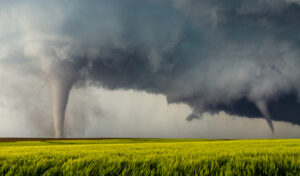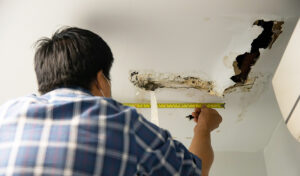A competent HOA board should evaluate their community’s exposure to HOA insurance risks and include them in their next update. While some risks are easier to identify, there are other uncommon ones that you shouldn’t neglect. It is easy to dismiss the more uncommon risks, as they are less likely to happen. However, this type of mentality will only serve your HOA poorly in the future.
HOA Insurance Risks to Include in Your Next Update
Insurance is a homeowners association’s first line of defense when the unexpected arises. It helps protect the association’s financial stability by providing support during times of crisis. Not all associations, though, know which risks to cover. Here are the HOA insurance risks to include in your next insurance update.
1. General Liability
Homeowners associations should purchase general and commercial liability insurance. This type of insurance protects the HOA in case of losses caused by third parties, particularly if these losses lead to property damage or injury. Liability insurance can cover the financial damages an HOA may be forced to pay as well as the cost of legal fees in the event a case goes to court.
2. Property Damage
While individual homeowners are responsible for their property insurance, the HOA is responsible for insuring its common areas and facilities. When purchasing insurance for HOA property, an HOA board should see to it that most perils are covered. These include high wind speeds, hail, wildfires, earthquakes, and other natural disasters. It is best to get the most important HOA insurance add-ons even if they might cost a little more.
3. Personnel Issues
Many homeowners associations employ workers or personnel. This exposes the HOA to potential loss or liability. An HOA should have proper workers’ compensation as well as fidelity insurance for fraud and theft.
Even if an HOA doesn’t have employees, it will still have board members. While running an HOA, board members expose themselves to all kinds of risks and liabilities. Homeowners can even sue board members personally. To ensure proper protections, an HOA should have sufficient D&O insurance.
4. Income Risks
An HOA can encounter financial losses either due to an increase in costs or a decrease in revenue. It can also happen as a result of poor fund management or fraud. As such, an HOA board should look for insurance that covers income risks.
5. Derecho
Derecho, derived from the Spanish word, are straight-line wind storms. They cause heavy rains, flash floods, and forceful winds similar to hurricanes and tornadoes. To some HOAs, a derecho might seem very unlikely to happen. But, in truth, it already has.
In 2020, a derecho swept through multiple states, including Wisconsin, South Dakota, Nebraska, Indiana, and Ohio, hitting Iowa the hardest. The storm lasted for about 14 hours. The winds, which could have reached 140 mph, left behind overwhelming damage — about $7.5 billion’s worth — and widespread power outages. And nobody saw it coming.
Keep in mind, though, that derecho coverage usually comes with a high-wind deductible. Typically, the deductible amounts to 2% of the building insurance limit. Ensure your association is ready to cover the deductible should a derecho come by.
6. Convective Storm
 One of the HOA insurance updates that many boards overlook is a convective storm, particularly the flooding that comes afterward. Convective storm flooding is happening more and more often, even in areas not typically susceptible.
One of the HOA insurance updates that many boards overlook is a convective storm, particularly the flooding that comes afterward. Convective storm flooding is happening more and more often, even in areas not typically susceptible.
This is what many communities went through in Florida following Hurricane Ian. Spaces that were not located in the flood zone experienced torrential rains and took in water. Because these spaces were not covered by insurance, associations were forced to repair the damages out of pocket.
Flood insurance can be very expensive. And, to a community that does not usually experience flooding, it might seem like a foolish investment. But flooding from convective storms is a real risk that should still get coverage. That way, associations will not have to suffer financially just to cover all the losses.
HOA boards should also advise homeowners to purchase their own coverage for floods. In condominiums, boards should advise unit owners located on the first floor to get flood insurance as well.
7. Polar Vortex
Some communities have coverage for burst pipes. But, if a deep freeze occurs, all the pipes could pop at once. This will cause continuous damage to the community until the problem gets resolved. Unfortunately, if your HOA is not a preferred client of a restoration company, you will have to wait a few weeks before a professional can get to you, especially if a polar vortex causes similar damage to other associations in your area.
Aside from getting insurance coverage for a polar vortex, it is a good idea to establish a good working relationship with a restoration company. Your association should put in the effort to build a strong relationship so that your HOA can end up on that company’s preferred clients list.
8. Cyberattack
When it comes to insurance, unpredictable weather is not the only risk to worry about. Another HOA insurance trend that is getting a lot of attention is cyberattack coverage. While a lot of associations do have this in their arsenal, far too many still downplay its importance. Even with a management company in charge of your funds, it is still imperative to get cyberattack insurance.
You never know what kind of information will end up in the wrong hands in the aftermath of a cyberattack. If your association deals with ACH payments for dues, a cyberattack could reveal personally identifiable information of homeowners. The same goes for associations that run online chat groups or websites.
9. Environmental Impairment
 This is particularly essential for condominiums or associations that operate high-rise buildings. These types of communities are more vulnerable to environmental impairment such as mold or legionnaires disease. And the only type of insurance that will cover these risks is an EI policy.
This is particularly essential for condominiums or associations that operate high-rise buildings. These types of communities are more vulnerable to environmental impairment such as mold or legionnaires disease. And the only type of insurance that will cover these risks is an EI policy.
Mold and legionnaires disease can stem from a number of things, including burst pipes. While standard policies may cover that, claims that arise from a roof leak that the association failed to address are not typically covered.
The Rising Cost of Insurance
Many HOA communities are severely underinsured. This mainly stems from a position of financial strain. Given the option, boards would rather not spend large amounts of money for policies that will likely never come into play anyway. But, it is this very notion that can pose a threat to the community at large. Believing that you don’t need coverage because a particular disaster is probably not going to happen is a one-way ticket to financial ruin.
The cost of insurance is going up, especially since more and more risks are becoming realities. Insurance companies are also erring on the side of caution. They are no longer basing their premiums and projections on historical data alone. Now, they are also incorporating new discoveries. But, insurance costs will likely stabilize once providers get all of their prices in order.
For now, though, HOA boards will have to strap up their boots and go in for the plunge. Insurance might be expensive now, but going without it is far more foolish than embracing the cost. High premiums are temporary, and bearing with it today will certainly pay off tomorrow.
The Final Word
Every insurance update should include a thorough review of their current policies. In addition to that, boards should also evaluate their need for coverage for more uncommon HOA insurance risks. In doing so, they can protect their associations from heavy financial burdens.
Clark Simson Miller offers an array of HOA management services, including assistance with insurance. Call us today at 865.315.7505 or contact us online to request a free proposal!
RELATED ARTICLES:
- D&O Insurance: A Rundown For The HOA Board
- Workers Comp Insurance: Why Your HOA Board Needs It
- What Are The Most Important HOA Insurance Coverages?

